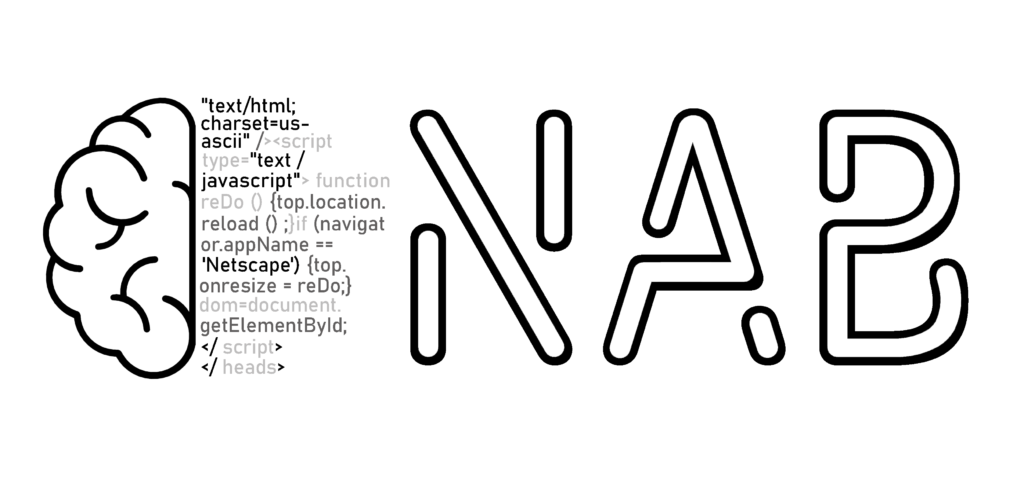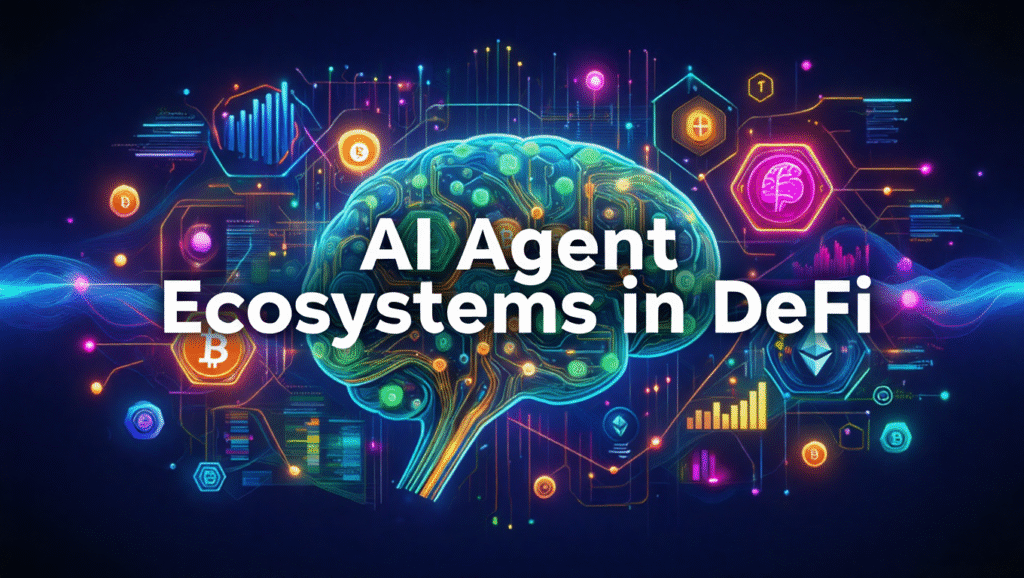The decentralized finance landscape is undergoing its most significant transformation since the introduction of automated market makers. AI agent ecosystems are emerging as the next evolutionary leap, where autonomous software entities collaborate to execute complex financial strategies with superhuman precision and speed.
Unlike traditional trading bots that follow predetermined rules, AI agents in DeFi are adaptive, learning systems capable of independent decision-making, strategic coordination, and continuous optimization. With over $200 billion in DeFi TVL and growing institutional adoption, these intelligent agents are poised to capture opportunities that human traders and simple algorithms cannot even perceive.
This comprehensive analysis explores how NeuralArB’s multi-agent architecture is pioneering the next generation of autonomous DeFi trading, where AI agents don’t just execute trades—they orchestrate entire financial ecosystems.
Understanding AI Agent Ecosystems: Beyond Simple Automation
What Makes an AI Agent Different from a Trading Bot?
Traditional trading bots are reactive systems following pre-programmed logic. AI agents are proactive entities with autonomous decision-making capabilities:
| Traditional Bots | AI Agents |
|---|---|
| Rule-based execution | Learning-based adaptation |
| Single-task focused | Multi-objective optimization |
| Static strategies | Dynamic strategy evolution |
| Human oversight required | Autonomous operation |
| Limited coordination | Swarm intelligence |
The Agent Architecture Revolution
Core AI Agent Components:

Agent Specialization Types:
- Scout Agents: Market opportunity detection and surveillance
- Analyzer Agents: Deep fundamental and technical analysis
- Coordinator Agents: Multi-agent strategy orchestration
- Executor Agents: High-frequency trade execution
- Risk Manager Agents: Portfolio protection and compliance
- Bridge Agents: Cross-chain opportunity coordination
Autonomous AI Agents Executing Complex Arbitrage Strategies
Multi-Layered Arbitrage Intelligence
Level 1: Traditional Arbitrage Enhancement
AI agents transform basic arbitrage through intelligent optimization:
Level 2: Predictive Arbitrage
Agents don’t just react to current prices—they anticipate future opportunities:
Example: Liquidity Event Prediction
- AI Agent detects: Large whale wallet movements toward Uniswap
- Prediction: Upcoming large swap will create temporary price impact
- Strategy: Pre-position on secondary DEXs to capture reversion trade
- Result: 3.7% profit on predicted liquidity event
Level 3: Composite Strategy Orchestration
Single agents coordinate multiple arbitrage strategies simultaneously:
Real-World Case Study (September 2025):

Advanced Strategy Examples
1. Dynamic Slippage Arbitrage
Agents automatically adjust strategies based on real-time market conditions:
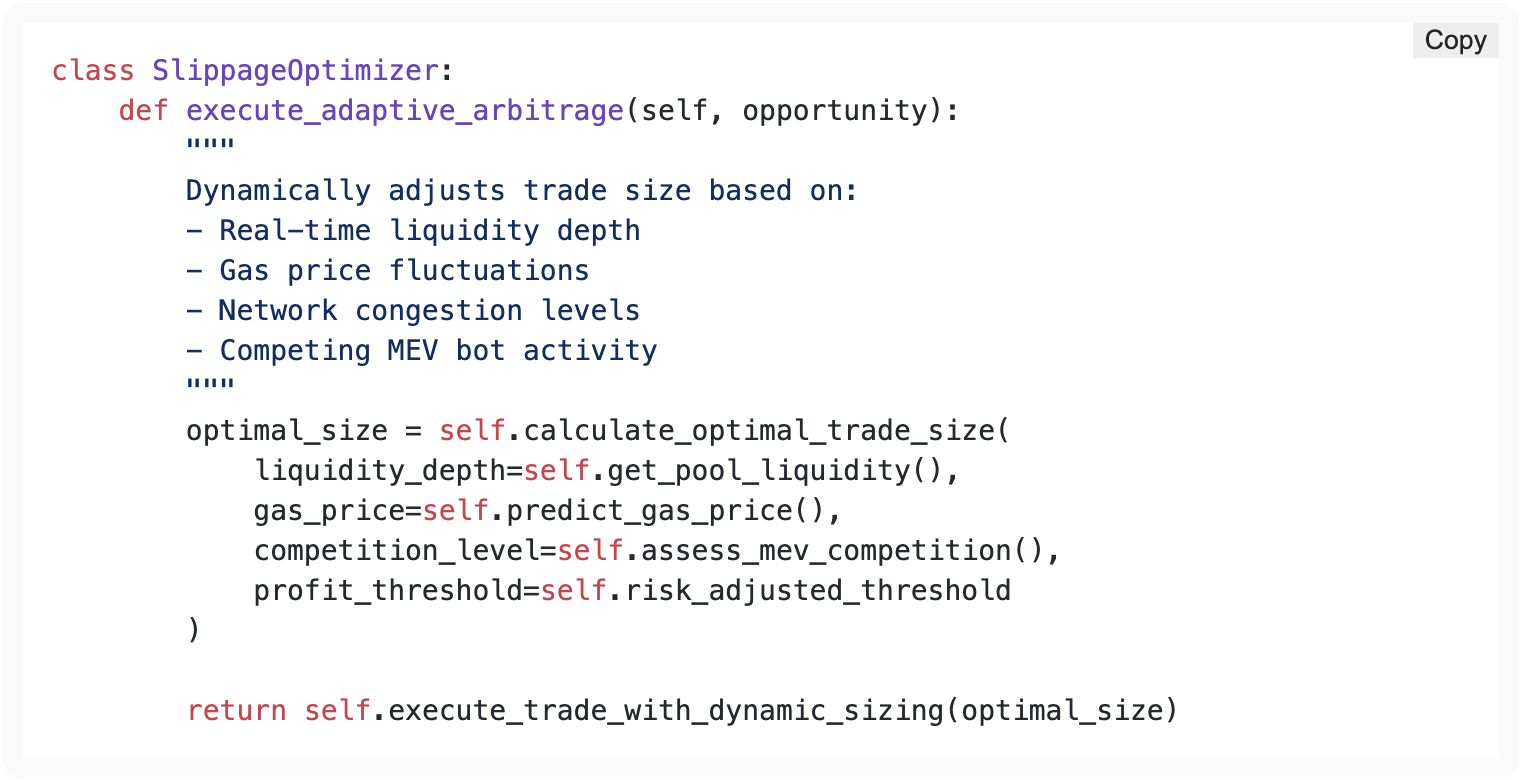
2. Flash Loan Orchestration
AI agents coordinate complex flash loan strategies across multiple protocols:
Multi-Protocol Flash Loan Strategy:
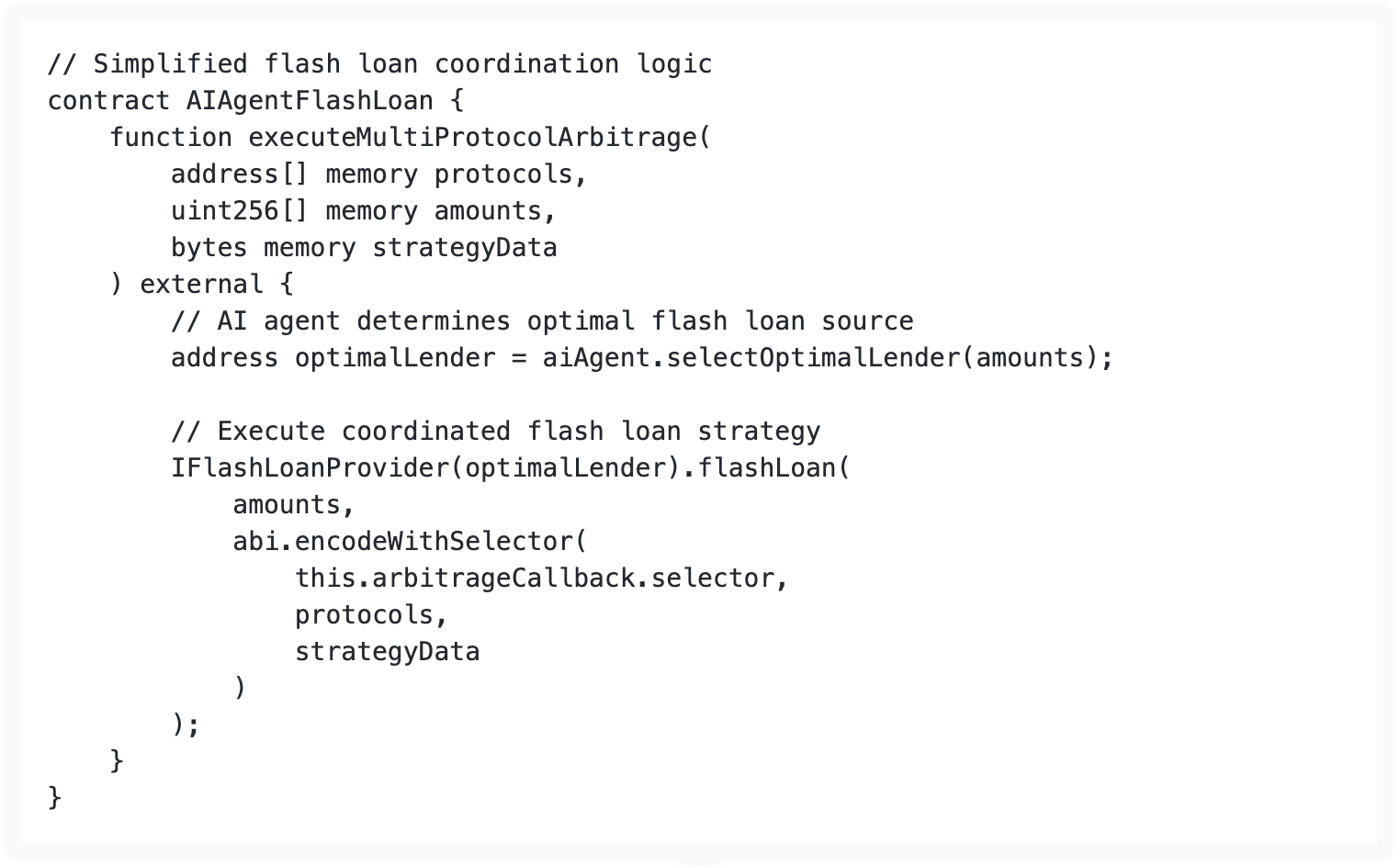
Multi-Agent Coordination for Cross-Chain Opportunities
The Swarm Intelligence Advantage
Distributed Opportunity Detection
Multiple specialized agents work together to identify cross-chain arbitrage opportunities:
Agent Coordination Architecture:

Real-Time Cross-Chain Coordination Example
Scenario: USDC price discrepancy across Ethereum, Polygon, and Arbitrum
Agent Coordination Flow:
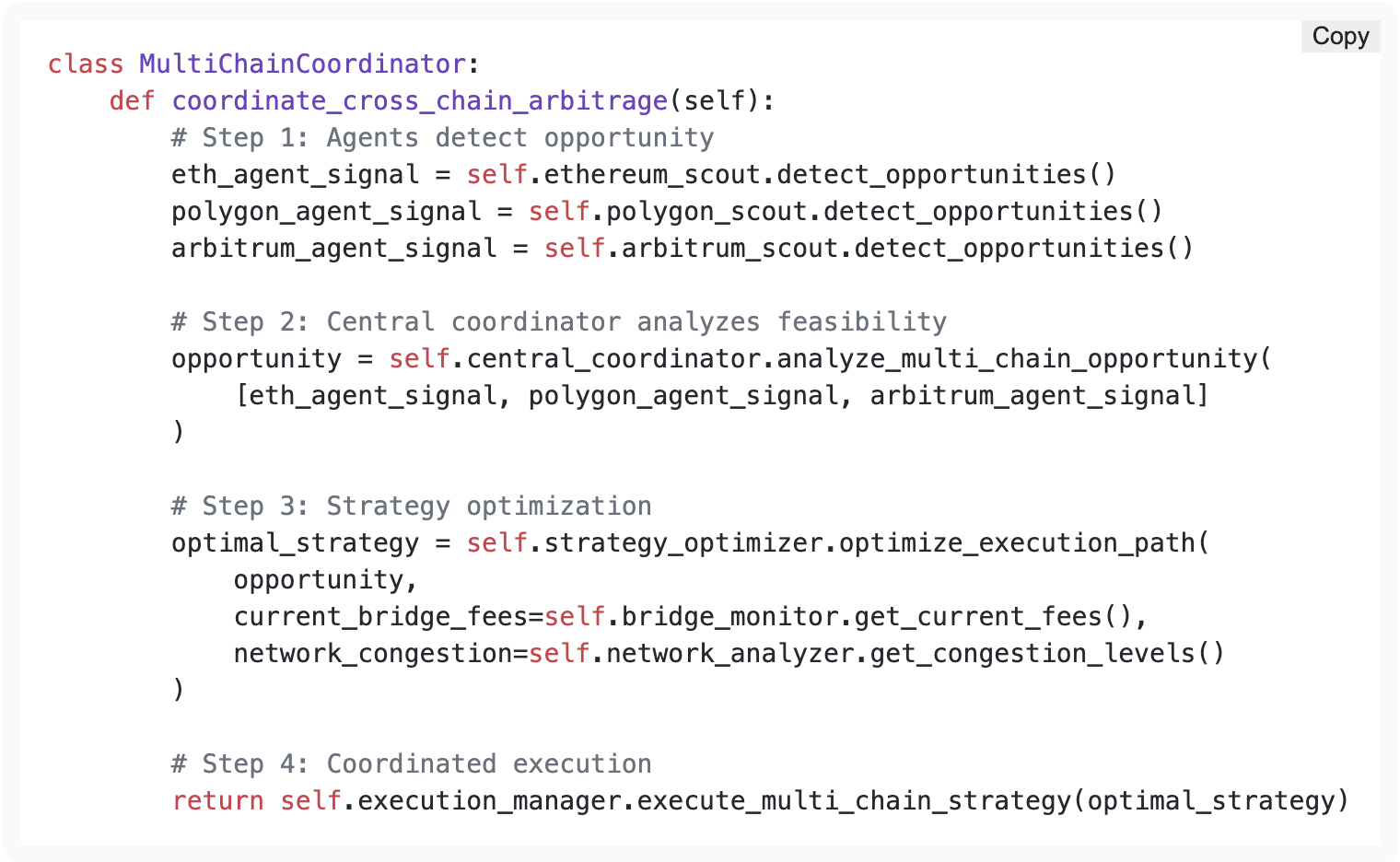
Advanced Multi-Agent Strategies
1. Bridge Timing Optimization Agents coordinate to minimize bridge fees and maximize timing efficiency:
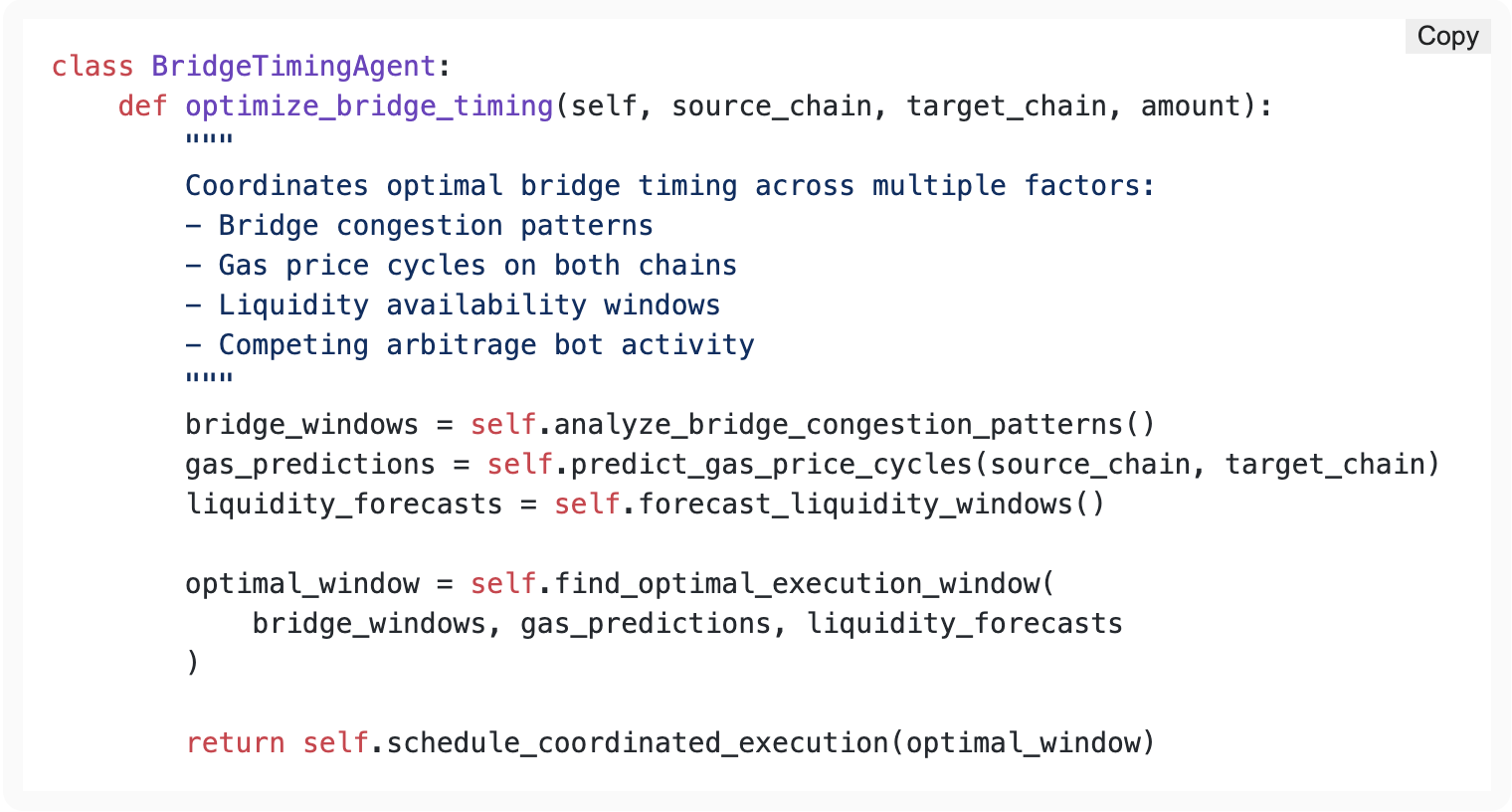
2. Multi-Chain Liquidity Fragmentation Arbitrage Agents identify and exploit liquidity imbalances across chains:
Case Study: WETH Liquidity Arbitrage (August 2025)
Agent Strategy:
- Detection Agent identifies opportunity on Arbitrum
- Coordinator Agent calculates optimal trade size considering bridge costs
- Execution Agents simultaneously execute on all three chains
- Result: 0.12% net profit after all fees and bridge costs
Cross-Chain MEV Protection and Coordination
Intelligent MEV Shield Networks
Agents collaborate to protect against MEV exploitation while maximizing their own opportunities:
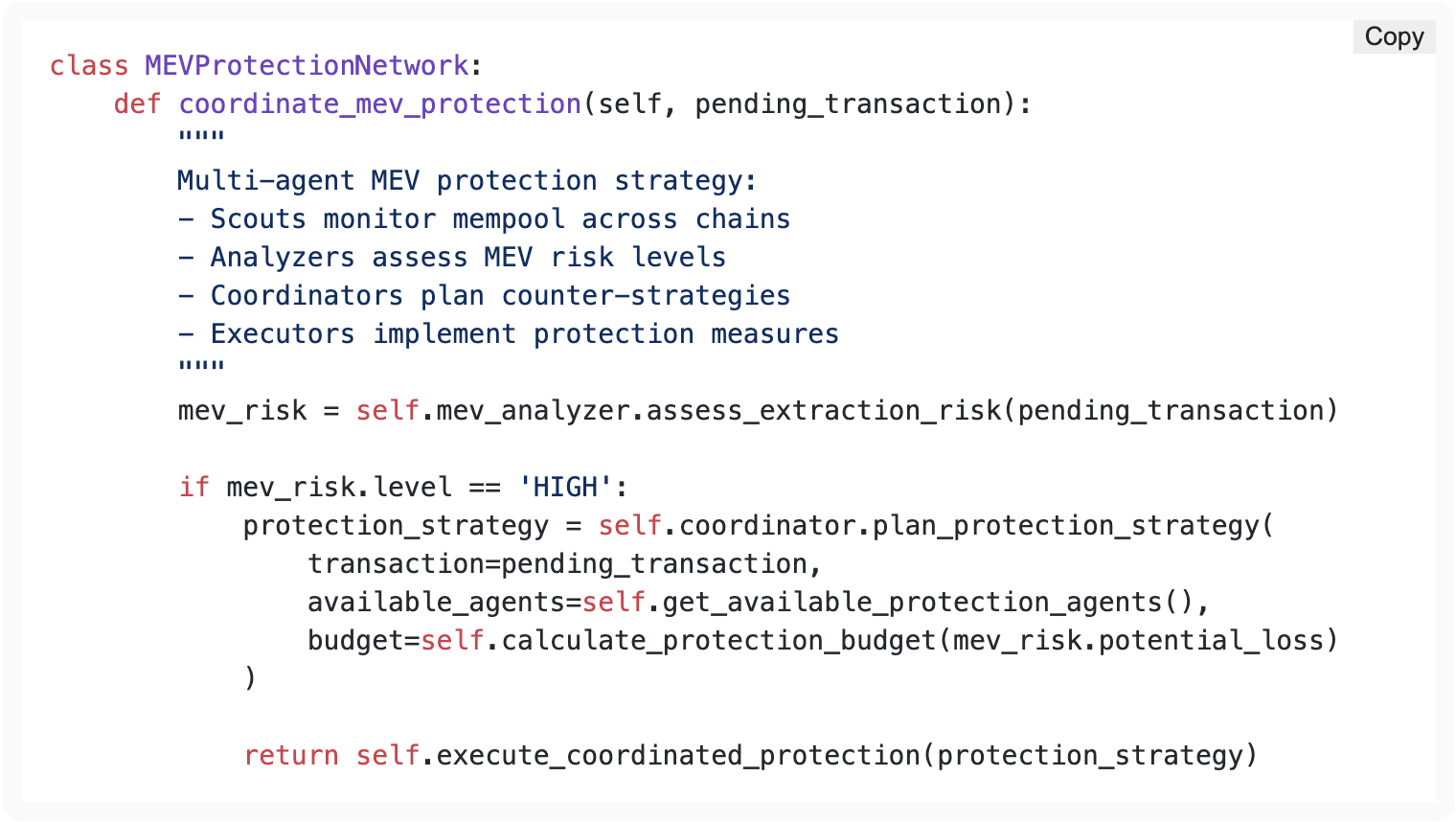
Performance Analysis: AI Agent Ecosystem Results
NeuralArB Multi-Agent System Performance (2025 YTD)
Aggregate Performance Metrics

Agent Specialization Performance
| Agent Type | Count | Success Rate | Avg Profit | Best Trade |
|---|---|---|---|---|
| Scout Agents | 45 | 89.2% | 1.23% | +12.4% |
| Analyzer Agents | 38 | 94.7% | 2.14% | +8.9% |
| Coordinator Agents | 12 | 96.1% | 3.22% | +15.7% |
| Executor Agents | 89 | 88.4% | 1.45% | +7.2% |
| Risk Managers | 28 | 97.8% | 0.87% | +4.1% |
| Bridge Agents | 35 | 85.6% | 2.67% | +18.3% |
Multi-Agent Coordination Success Stories
Case Study 1: “The Great USDC Depeg Arbitrage” (March 2025)
- Event: USDC temporarily depegged to $0.87 due to SVB concerns
- Agent Response Time: 12 seconds to detect opportunity
- Coordinated Strategy: 23 agents across 8 chains executed synchronized arbitrage
- Total Profit: $2.4M across all coordinated positions
- Individual Profit Share: Avg. 14.7% per participating account
Case Study 2: “Cross-Chain Yield Migration” (July 2025)
- Opportunity: New high-yield farming opportunity on Arbitrum
- Challenge: Efficiently migrate funds from Ethereum and Polygon
- Agent Coordination: 15 bridge agents optimized migration timing
- Result: 89% cost reduction vs. manual migration
- Additional Alpha: Captured 3.2% arbitrage during migration process
Comparative Analysis: Human vs. AI Agent Performance
| Metric | Human Traders | AI Agents | Improvement |
|---|---|---|---|
| Reaction Time | 5-30 seconds | 0.2 seconds | 25-150x faster |
| Simultaneous Strategies | 1-3 | 15-50 | 5-50x more |
| Market Coverage | 2-5 chains | 10+ chains | 2-5x broader |
| Uptime | 8-12 hours/day | 24/7 | 2-3x more |
| Emotional Bias | High | None | Objective decisions |
| Learning Speed | Months | Hours | 100x faster |
Future Developments and Roadmap
Near-Term Developments (Q4 2025 – Q1 2026)
1. Advanced Learning Algorithms
- Meta-learning: Agents that learn how to learn more efficiently
- Few-shot learning: Adapting to new market conditions with minimal data
- Transfer learning: Applying knowledge across different DeFi protocols
2. Enhanced Coordination Mechanisms
- Auction-based coordination: Agents bid for coordination roles
- Reputation-weighted voting: Strategy decisions based on agent track records
- Dynamic team formation: Agents form temporary alliances for specific opportunities
Medium-Term Vision (2026-2027)
1. Cross-Protocol AI Standards
Development of industry standards for AI agent interoperability
2. Decentralized AI Agent Marketplaces
Platforms where AI agents can:
- Rent computational resources from each other
- Share alpha signals through encrypted channels
- Form temporary partnerships for complex strategies
- Trade strategy components in NFT-like marketplaces
Long-Term Vision (2027+)
1. Fully Autonomous DeFi Protocols
DeFi protocols that operate entirely through AI agent governance
2. Cross-Chain AI Agent Networks
Universal agent networks that operate seamlessly across all blockchain ecosystems:
- Universal agent identities portable across chains
- Cross-chain reputation systems maintaining agent history
- Interchain communication protocols for real-time coordination
- Multi-chain strategy execution with atomic cross-chain transactions
Conclusion: The Future of Autonomous DeFi
AI agent ecosystems represent the next evolutionary leap in decentralized finance. We’re transitioning from human-operated protocols to AI-governed ecosystems where intelligent agents collaborate to optimize financial outcomes with superhuman efficiency.
The age of autonomous financial intelligence has arrived. AI agents are not just tools—they are the foundation of DeFi’s evolution toward a truly decentralized, efficient, and intelligent financial system. The question isn’t whether AI agents will dominate DeFi, but whether you’ll be part of this transformation.
Ready to join the AI agent revolution in DeFi?
Experience NeuralArB’s AI Agent Ecosystem →
💡 Related Deep Dives:
Disclaimer: AI agent trading involves significant risks including smart contract risk, model risk, and market volatility. AI agents can make rapid decisions that may result in substantial losses. Past performance of AI agents does not guarantee future results. Always understand the risks and consider your risk tolerance before deploying AI agents for trading.
